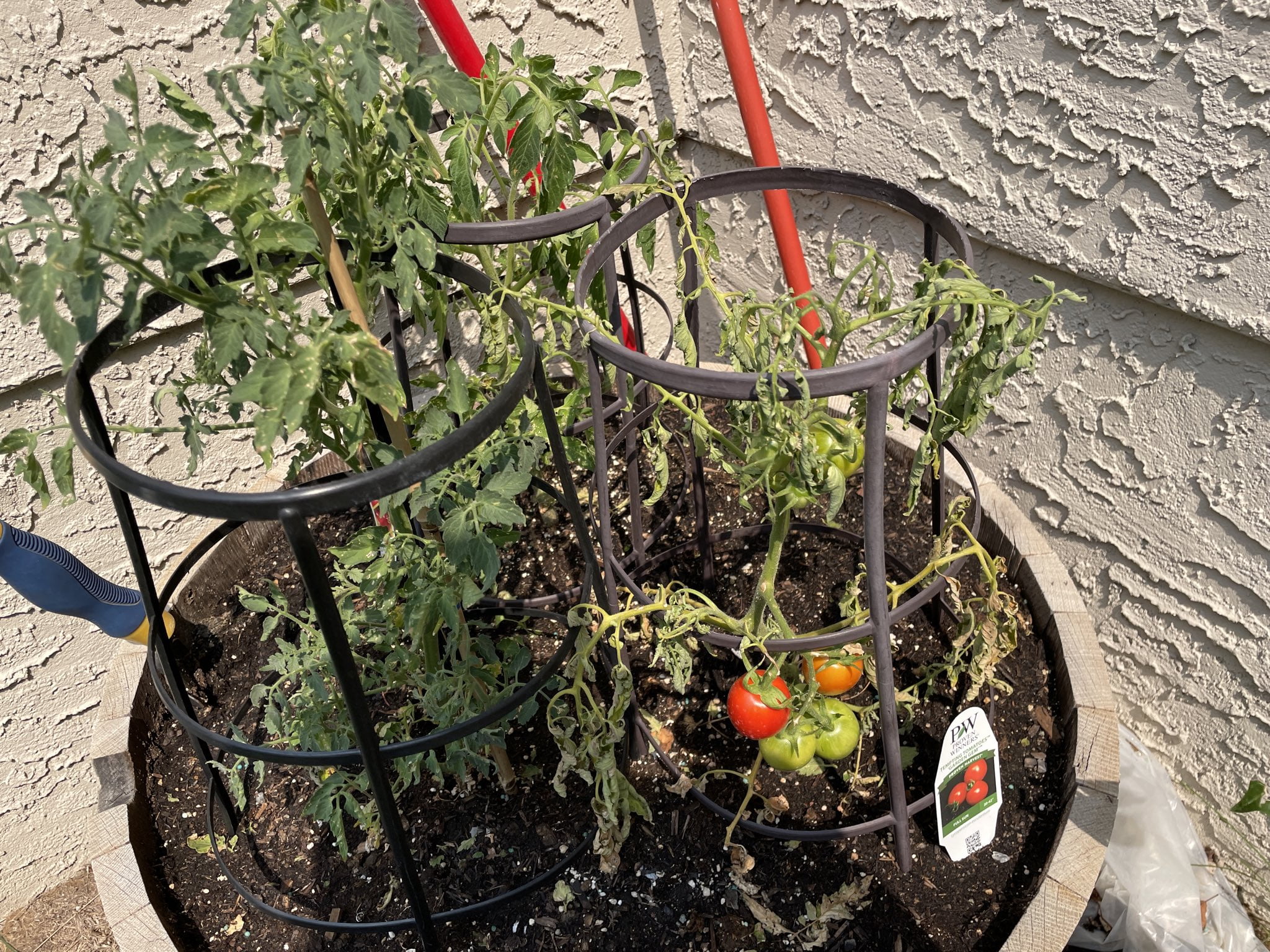
You’ve embarked on a journey into the vibrant world of gardening, cultivating those juicy tomato plants that hold the promise of delicious summer salads and hearty sauces. But wait, are your tomato plants showing signs of distress? Fear not, dear gardener, for this article is your ultimate guide to understanding and addressing the signs of underwatered tomato plants. Get ready to don your gardening detective hat and decode the language of your plants.
Table of Contents
Spotting the Telltale Signs of Underwatered Tomato Plants
Your tomatoes might not speak English, but they sure have their way of sending SOS signals. Here’s how to decipher their cryptic messages:
Cracking the Code of Wilting Whispers
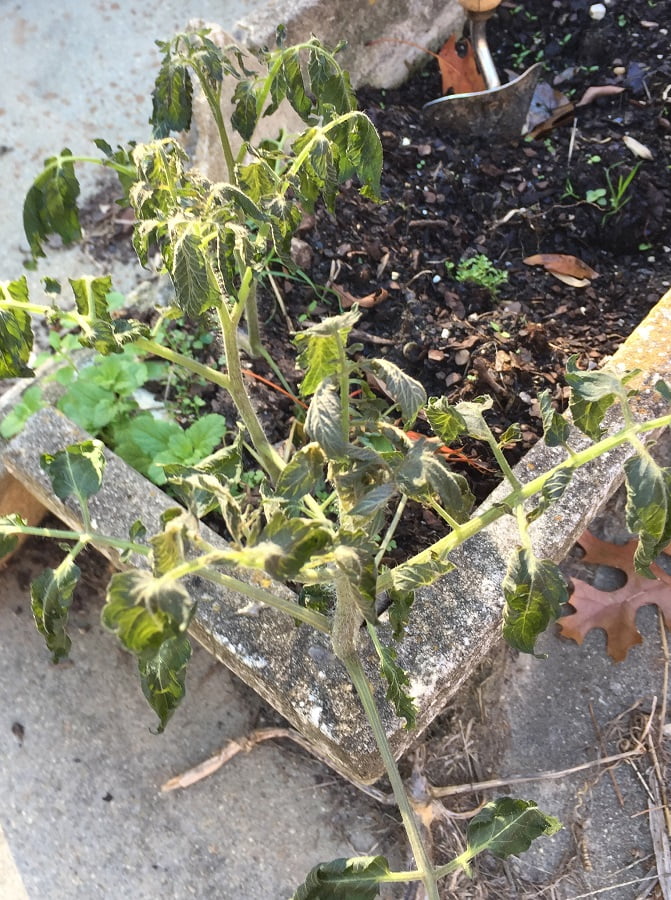
Ah, the enchanting world of tomato plants – these leafy divas can rival the most dramatic actors on stage. The mere whisper of a water shortage can turn them into true drama queens, stealing the spotlight with their wilting performance. Picture this: they droop like a thespian caught mid-monologue, their leaves bowing gracefully as if pleading for a refill on life’s refreshment. It’s a scene straight out of a garden theater, where the language spoken isn’t English, but the universal yearning for hydration.
Now, let’s take a closer look at these botanical actors. Their leaves and stems, usually taut and lively, transform into something resembling the expression of a tired dog’s tail – that unmistakable droopiness that tells a story of thirst. Just as a weary pup’s tail conveys the need for rest, these sagging leaves are the tomato plant’s way of conveying a message: “Water, please, and make it snappy!”
The dance of wilting whispers is a theatrical masterpiece that every gardening aficionado becomes privy to. These signs aren’t just visual cues; they’re a silent plea that echoes through the garden, inviting you to be the hero. So, next time you witness this delicate performance, know that you hold the script to this botanical drama – a script that involves a simple act of watering, transforming wilting whispers into a standing ovation-worthy revival.
Crispy Clues
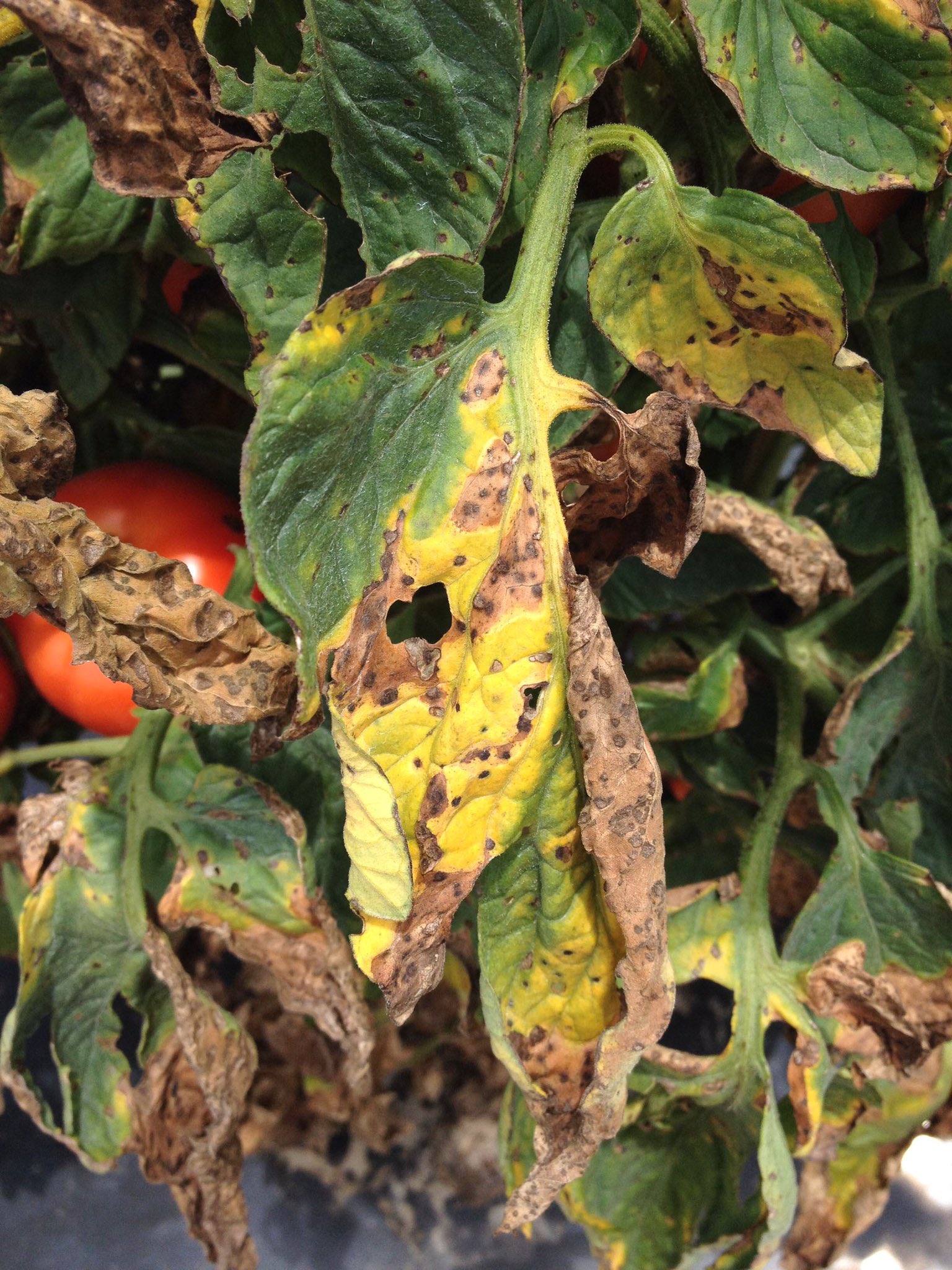
Amidst the vibrant green foliage of your tomato plants, there’s a language of distress spoken through texture – the language of crispy clues. When those once-lush leaves start turning brittle and breakable, it’s as if your tomatoes are sending out a Morse code distress signal: “Hey there, can you spare a splash of water?”
Imagine these leaves as parched wanderers in a desert, their surface resembling the arid landscape they’re battling. Their plea for moisture is palpable, even as they offer a visual cue that’s hard to ignore. And if that wasn’t enough, watch closely as the edges of these leaves curl inward, creating an impression of longing – as if they’re yearning for a refreshing shower to wash away their thirst.
These crispy clues are your invitation to be the garden’s water bearer, the provider of life’s elixir. Answer their plea with a gentle drenching, and witness the transformation from dry and desperate to reinvigorated and radiant. It’s a language of nature that transcends words, and as you decode these crispy whispers, you’re becoming an integral part of the harmonious dance between plants and caretaker.
Drooping Drama
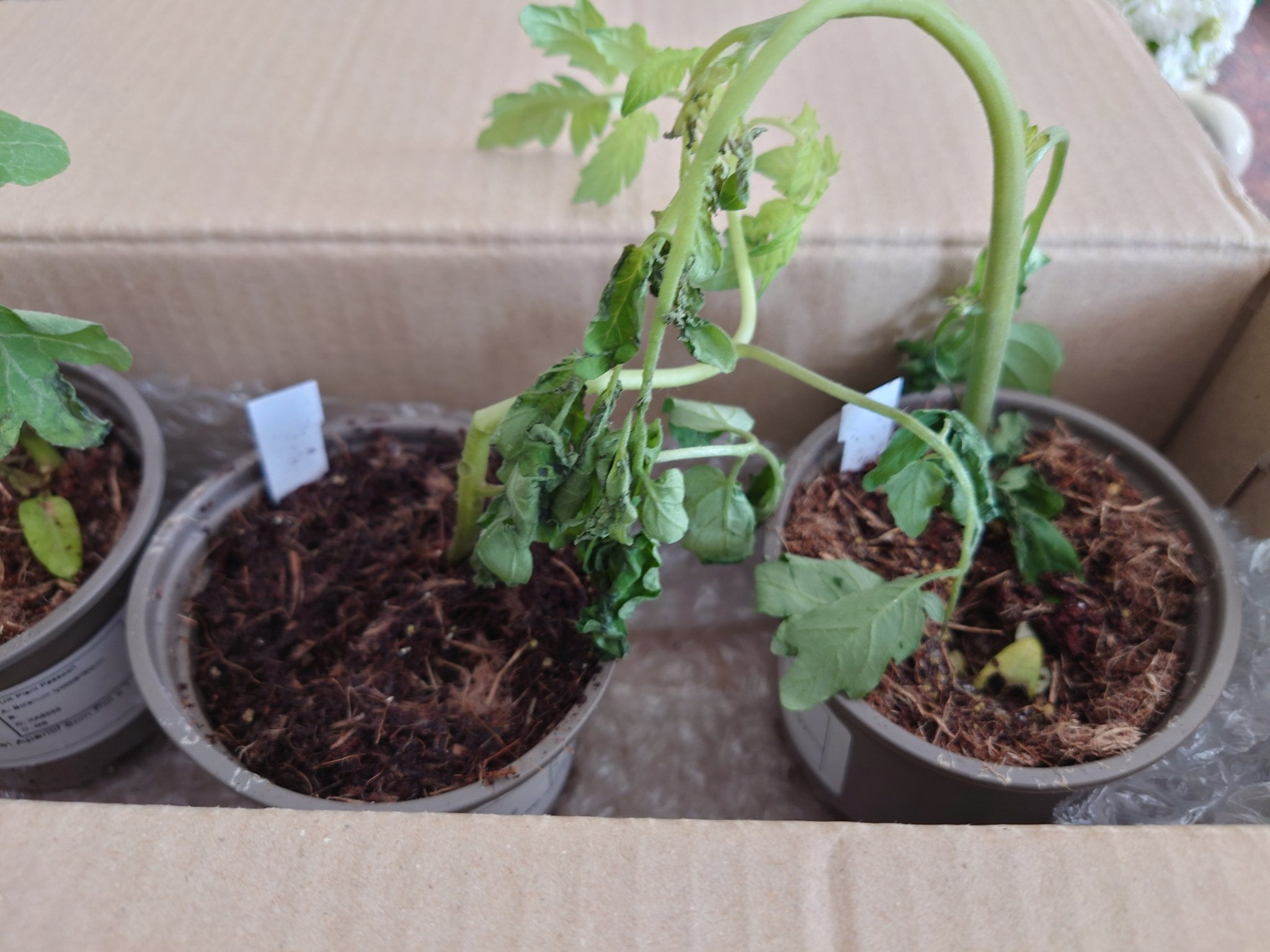
Let’s set the scene: you step into your garden, and there it is – a real-life drooping drama, starring none other than your tomato plant. The leaves that were once reaching for the sky now hang down like a wilting flower, a performance that tugs at your gardening heartstrings. But don’t be fooled; this isn’t a theatrical act; it’s a genuine cry for help.
Imagine those leaves as the curtains closing on a day’s performance, exhausted and seeking relief. They’re sending out an S.O.S., a message that translates to “Parched and Thirsty – Send Water, Stat!” This drooping drama isn’t a melodramatic whim; it’s the botanical equivalent of a blinking emergency light, demanding your immediate attention.
In the language of plants, this posture is a telltale sign of dehydration, a signal that your tomato plant is in dire need of a drink. It’s a scene that might pull at your heartstrings, but it’s also an invitation to be a garden hero. Armed with your watering can and a spirit of nurturing, you have the power to turn this drooping drama into a tale of resilience and revival.
Yellowing Yells
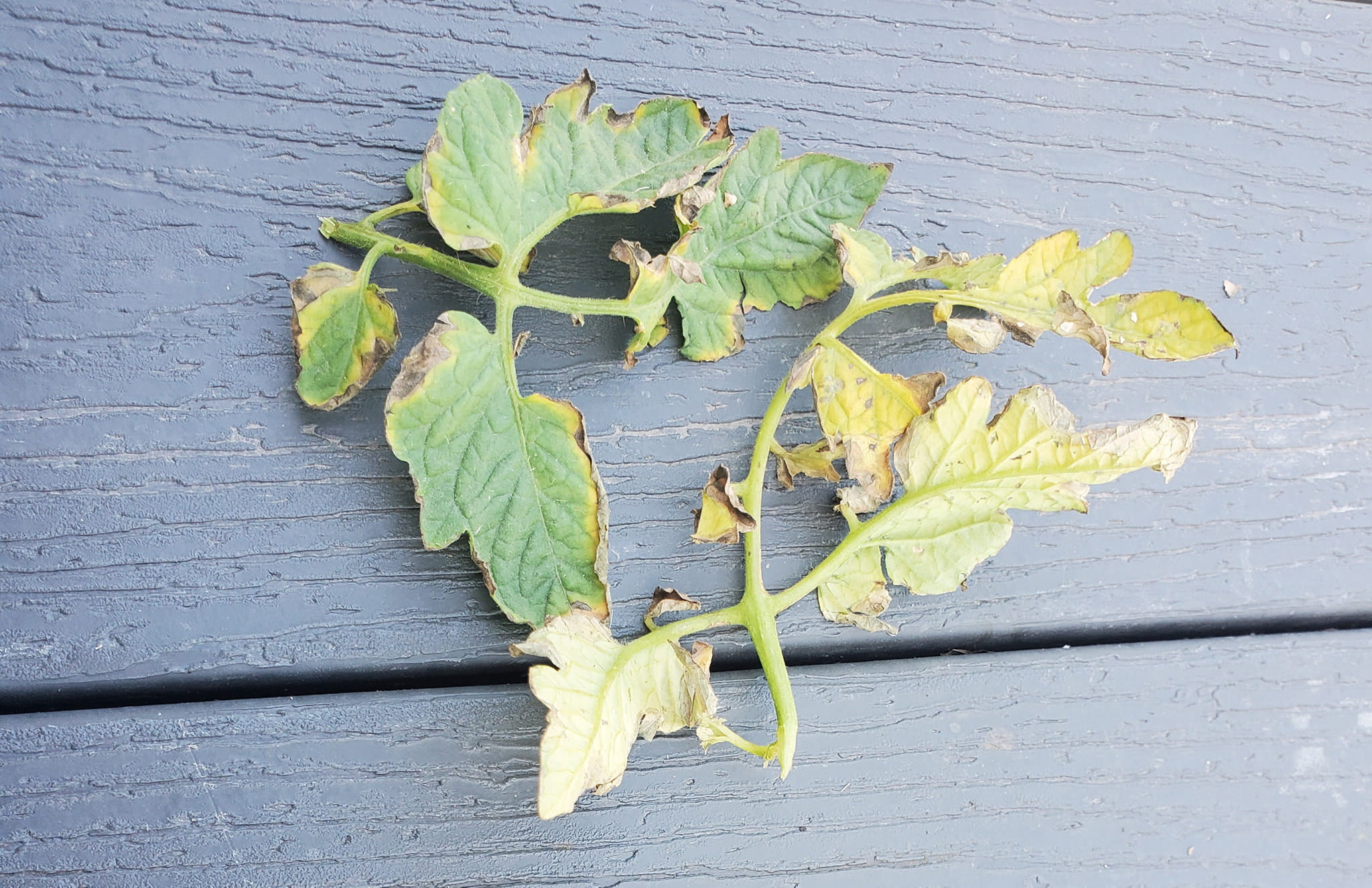
Step into your garden and witness a silent transformation, a visual symphony composed in shades of caution. Your tomato’s leaves are no longer content with their vibrant greens – they’re raising their voices in a chorus of yellow. It’s as if the garden itself is holding up caution signs, and your plant is the messenger.
This isn’t a haphazard change; it’s a calculated move born from survival instincts. Your tomato plant, like a seasoned strategist, is shedding its older leaves to conserve water, redirecting resources to where they matter most. The yellowing is a signal of transition, a response to the environment’s whispers of stress.
Consider it a botanical metaphor for resilience. In a world of challenges, your tomato plant adapts by shedding the old and embracing the new. It’s a visual narrative of growth in the face of adversity, a story of evolution written in color.
As a vigilant gardener, you’re invited to decode this language of change. These yellowing yells aren’t cries of defeat; they’re declarations of a battle-hardened spirit. Embrace this chapter of your plant’s journey, and watch as it transforms challenges into opportunities, all while donning a cloak of yellow resilience.
Bringing Your Tomato Plants Back to Life
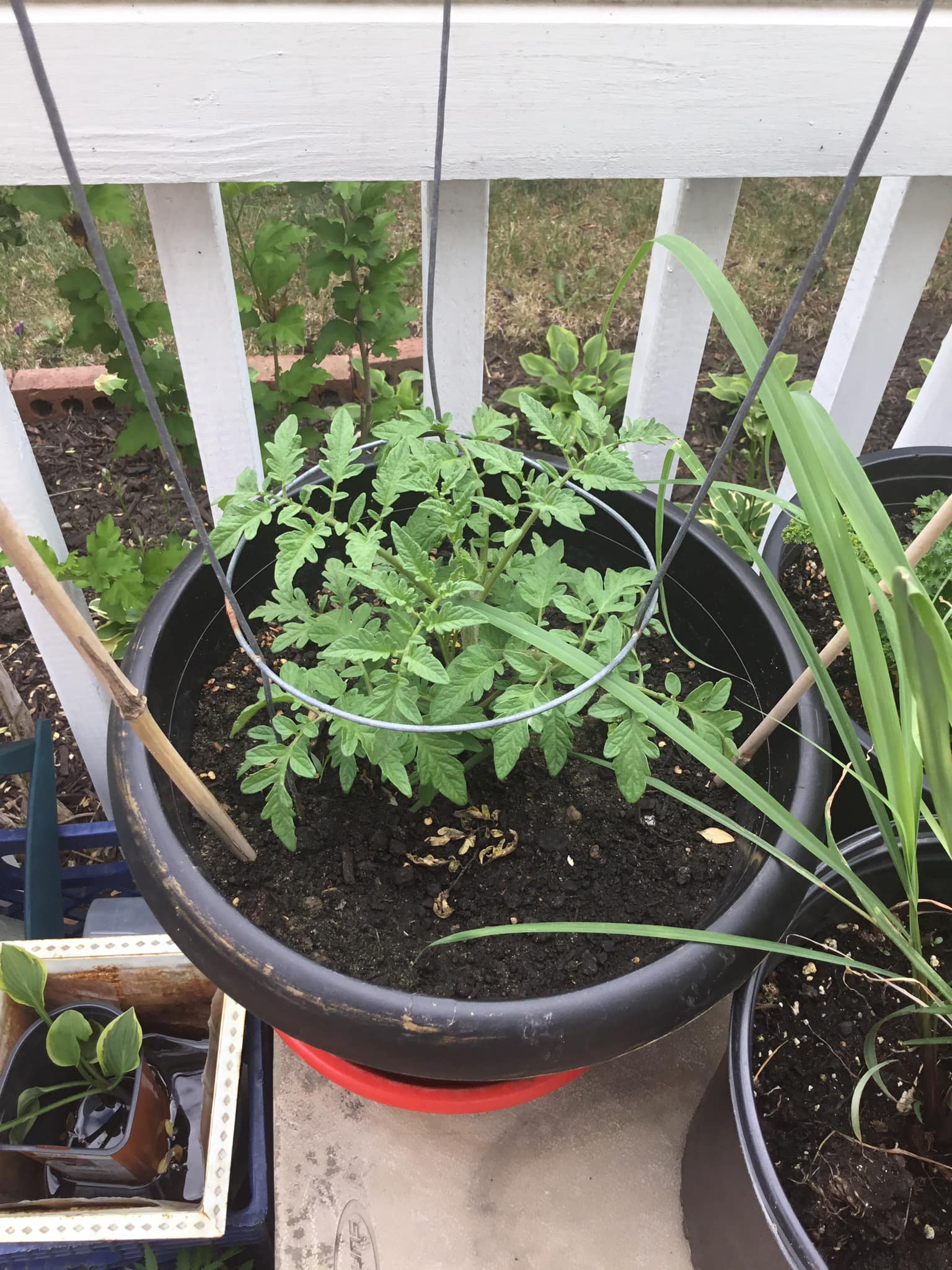
Your tomato plants, those brave little soldiers in your garden, might face a tough battle sometimes. But fear not – you’ve got the tools to rescue them and make them flourish again. Let’s dive into the art of nurturing and revitalizing your tomato troopers.
Hydration with Care
In the realm of plant care, patience becomes a potent tool, akin to a gentle rain that nurtures rather than drenches. When it’s time to provide your tomato plants with the water they yearn for, resist the urge to rush. Just like you wouldn’t gulp down a glass of water in one go, your plants deserve a more measured approach.
Offering them a delicate dance of droplets, a slow and deliberate performance that prevents shock and welcomes vitality, is key. A sudden deluge can startle your plants, disrupting their equilibrium and causing more harm than good. Instead, opt for the tender touch of gradual watering – a strategy that echoes the natural rhythms of the environment.
As you reach for your watering can, think of it as a conductor’s baton, orchestrating a symphony of sustenance. Direct your efforts towards the base, where the roots reside. This targeted technique allows the roots to receive water directly, like a quenched thirst being fulfilled at the source.
With each drop, envision your plants graciously absorbing the moisture, their roots extending like eager hands reaching for a lifeline. The effect of watering tomatoes will not only prevents shock but also promotes a harmonious relationship between plant and water – a relationship founded on understanding and nourishment.
So, the next time you embark on the watering ritual, remember that patience is your ally, and each drop is a note in the melody of growth. Your plants will thrive, not just because of water, but because of the care and thoughtfulness you infuse into every nurturing gesture.
Mulching Magic
Mulching stands as a time-honored ritual, a practice that holds the key to unlocking the full potential of your plants. Envision it as a masterstroke, a strategic maneuver that imparts profound benefits to the very foundation of your garden.
As you step into the shoes of an expert horticulturist, you understand that mulching is more than just an aesthetic touch. It’s a deliberate act that mimics nature’s own design, bringing harmony to the delicate balance beneath the surface.
Picture this: you lay down a gentle layer of mulch around the base of your plants, akin to tucking them in with a cozy, protective blanket. This seemingly simple act becomes a potent shield against the forces of nature. Like a vigilant guardian, the mulch locks moisture into the soil, thwarting the swift escape of water through evaporation. Your plants revel in a consistent hydration, as if they’re sipping from an everlasting reservoir.
But there’s more to this mulching magic than meets the eye. The mulch acts as a sentinel against temperature extremes, a buffer that keeps the soil cool when the sun blazes and warm when the frost nips. It’s a carefully orchestrated performance, designed to create a microclimate that nurtures your plants year-round.
Now, here’s where the real enchantment unfolds: as the mulch gradually decomposes, it bestows upon the soil a banquet of nutrients. Think of it as nature’s generosity, a slow-release feast that feeds your plants from the ground up. As the mulch breaks down, it attracts an array of wondrous microorganisms, creating a bustling ecosystem that enhances soil structure and fertility.
This symphony of natural processes, orchestrated by your expert hands, results in thriving, resilient plants. It’s a tale of soil enrichment, a narrative of sustainable growth, and you’re the author, infusing each layer of mulch with purpose and intention.
So, let this mulching magic be your secret weapon, a tool that not only preserves moisture and prevents evaporation but also orchestrates a symphony of nourishment beneath the earth’s surface. Your plants, nestled beneath their cozy mulch blanket, will flourish under your expert care.
Pruning Perks: Crafting Growth Through Thoughtful Trimming
Now, let’s delve into the world of pruning, a practice that might sound fancy but is actually pretty straightforward. Imagine yourself as a plant hairstylist – instead of scissors, you’ll be using shears, and your goal is to help your tomato plant look its best.
So, picture this: you’re checking out the lower leaves of your tomato plant, the ones closer to the ground. These leaves might look a bit tired or not as perky as the rest. It’s like giving your plant a spa day – you’re removing the leaves that aren’t feeling their best.
But here’s the cool part: when you do this, you’re actually helping your plant focus its energy on the parts that are doing great. It’s like giving a high-five to the healthier leaves and saying, “You’re doing awesome, keep it up!”
And guess what? By doing this, you’re also giving your plant a chance to grow new leaves in those spots. It’s like making space for new friends in your tomato plant family. These new leaves will be full of energy and ready to help the plant grow big and strong.
Think of it like trimming your hair – you’re getting rid of the split ends so that the rest can grow healthier. So, grab your shears, give those lower leaves a little trim, and watch your tomato plant thrive in the most stylish way possible!
